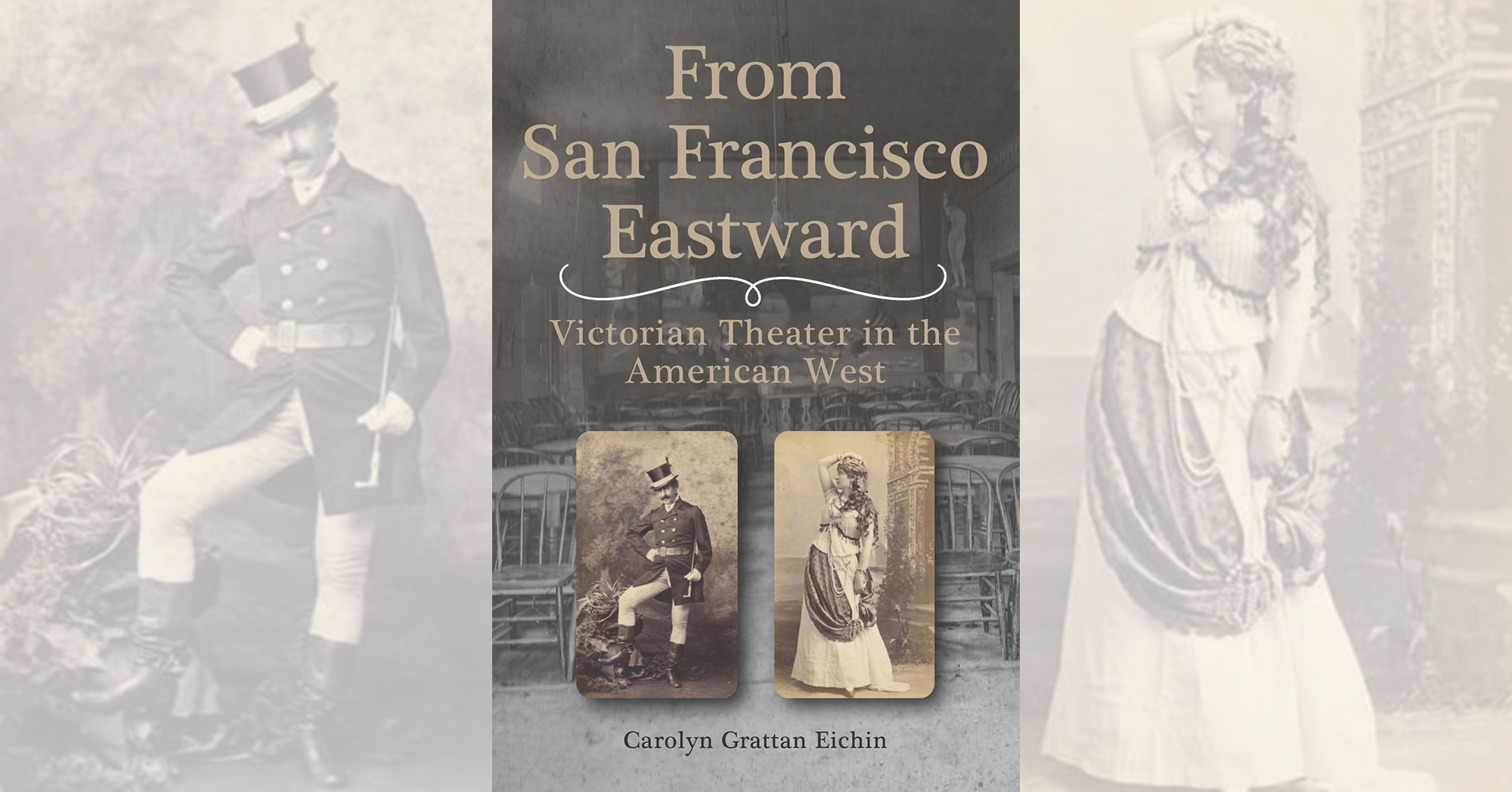From San Francisco Eastward: Victorian Theater in the American West, by Carolyn Grattan Eichin, University of Nevada Press, Reno and Las Vegas, 2020, $60
Let’s face it, there are only so many times one can shoot up the Long Branch Saloon before it gets old. As the West got properly settled and boredom set in, there was an increasing cry for decent entertainment. Such, in fact, was the demand for good, respectable stage fare that by 1870 San Francisco boasted the third busiest theater district in the United States, after New York and Boston. Besides its own theaters, the “City by the Bay” served as a hub from which traveling troupes extended their range by sea to Portland, Seattle and Vancouver or by land to whichever cities or towns could/would accommodate them.
Here Carolyn Grattan Eichin profiles the producers, directors and performers who brought theater to the West and reveals how Victorian-era attitudes shaped what they wrote and presented. Despite the expected trends, such as overwrought acting and a class-conscious divide between “respectable” theater and such lowbrow fare as minstrel and burlesque shows, Eichin demonstrates that the West exerted its own influence on the material, effecting changes that eventually made their way back East.
Victorian mores were most starkly evident in how implicit the mention of sex was in highbrow theater compared to more permissive fare, though both sold their ample share of tickets. While most extant plays referencing prostitution came with the puritanical assumption “doves” were irreversibly “soiled,” the controversial Camille, with its more sympathetic portrayal of a “whore with a heart of gold,” was a guaranteed sellout wherever it played out West, as well as offering an emotionally challenging role few leading ladies could resist.
Another slowly but steadily growing Western trend was for minstrels in blackface to be joined or even supplanted by such talented black Americans as the autistic savant Thomas “Blind Tom” Wiggins and the Hyers Sisters, who presented their music and humor in a less-stereotyped and more recognizably human way. Similarly, the theatrical move west gave Irish immigrants the chance to chip away at the degrading image under which they had labored since the Potato Famine. To a lesser degree Chinese, Japanese and American Indian performers likewise assaulted the racist ramparts by taking the stage.
Lavishly illustrated with period photographs, From San Francisco Eastward offers a look at Western entertainment from a different perspective, demonstrating that some of the most profound influences on modern American theater came not westward from New York but back east from California.
—Jon Guttman
This post contains affiliate links. If you buy something through our site, we might earn a commission.





